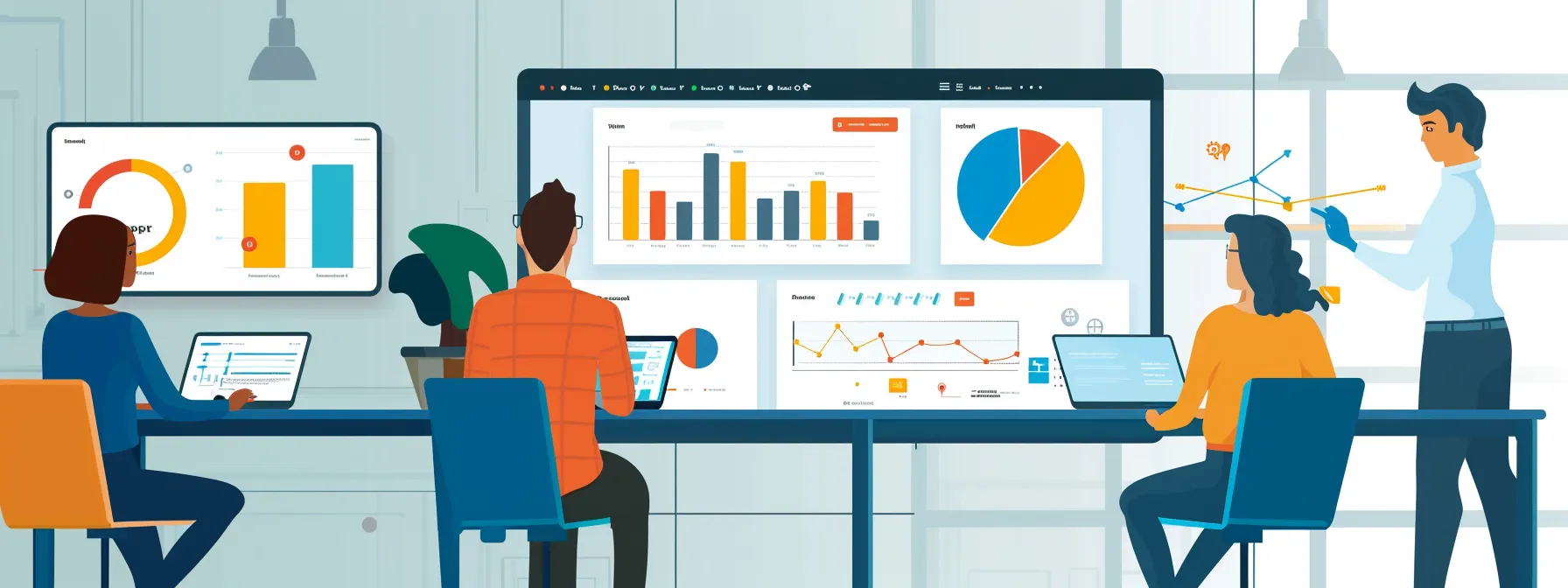Are your email campaigns falling flat? Email segmentation is the key to boosting engagement and driving results. This article will explore effective strategies for segmenting your email list, including best practices and advanced techniques. You’ll learn how to target your audience more precisely, increasing open rates and conversions. By implementing these strategies, you’ll transform your email marketing from generic broadcasts to personalized, high-impact communications that resonate with your subscribers.
Key Takeaways
- Email segmentation divides subscribers based on specific criteria to enhance engagement and campaign effectiveness
- Effective segmentation strategies include demographic, behavioral, geographic, engagement-level, and preference-based approaches
- Advanced techniques like predictive and dynamic segmentation leverage AI and real-time data for personalized campaigns
- Case studies demonstrate successful segmentation strategies across various industries, resulting in improved engagement and conversions
- Future trends include AI-driven personalization, real-time data utilization, and ethical considerations in email marketing practices
Understanding Email Segmentation and Its Importance

Email segmentation divides subscribers based on factors like income, climate, and inventory. This strategy enhances engagement by tailoring messages to specific audience behaviors. Marketers measure segmentation success through key metrics, allowing them to refine their approach and reduce complexity. Effective segmentation leads to improved open rates, click-throughs, and conversions.
Defining Email Segmentation
Email segmentation is a strategic approach used by experts to divide an email list into distinct groups based on specific criteria. This technique allows marketers to tailor their messages to different consumer segments, enhancing relevance and engagement in the internet-driven marketplace. Businesses can create targeted campaigns that resonate with each group’s unique characteristics and behaviors by thoroughly evaluating subscriber data.
The Impact of Segmentation on Engagement
Email segmentation significantly impacts engagement by enabling organizations to deliver targeted content to specific audience segments. Marketers can create personalized campaigns that resonate with each group’s interests and needs by utilizing tools and resources to analyze subscriber data. This approach improves open rates and click-throughs and helps protect against potential data breaches by ensuring sensitive information is only shared with relevant recipients. Effective segmentation strategies can transform a generic database into a powerful engagement tool:
- Increased relevance of content
- Higher open and click-through rates
- Improved customer satisfaction
- Enhanced brand loyalty
- Better protection against data breaches
Key Metrics to Measure Segmentation Success
Measuring segmentation success involves tracking key metrics for each market segmentation, such as open rates, click-through rates, and conversion rates. Marketers can refine their newsletter strategies by analyzing these metrics and developing more accurate customer personas. Additionally, monitoring network access and vulnerability indicators helps ensure the security of segmented data, protecting sensitive information while optimizing engagement strategies.
Types of Email Segmentation Strategies

Email segmentation strategies encompass various approaches to tailor content for different audience segments. These include demographic, behavioral, geographic, engagement-level, and preference-based segmentation. Each method allows marketers to create personalized experiences, increase local relevance, and deliver targeted campaigns. By leveraging customer relationship management tools and conducting experiments, businesses can optimize their virtual communication strategies and enhance lifestyle-based segmentation for improved engagement.
Segmentation Based on Demographics
Demographic segmentation tailors marketing communications based on audience characteristics such as age, gender, income, and education. This approach allows marketers to craft messages that resonate with specific personality types, capturing attention and minimizing risk. Businesses can create targeted interfaces that appeal to different segments by utilizing demographic data, enhancing engagement and improving campaign effectiveness.
Behavioral Segmentation for Personalized Experiences
Behavioral segmentation is a key principle in email marketing that personalizes experiences based on audience actions and preferences. This practice analyzes user interactions, purchase history, and browsing patterns to create targeted campaigns that resonate with specific segments. By reducing the attack surface and focusing on user behavior, marketers can achieve their goal of delivering highly relevant content that drives engagement and conversions.
Geographic Segmentation to Increase Local Relevance
Geographic segmentation enhances local relevance by tailoring email campaigns based on subscribers’ locations. This strategy leverages data collection to create targeted content that resonates with specific regions, improving traffic flow and engagement. By incorporating geographic insights into the table of contents and value proposition, marketers can develop omnichannel approaches that connect with audiences on a more personal level:
- Customized promotions for local events
- Region-specific product recommendations
- Localized language and cultural references
- Time zone-appropriate sending schedules
- Weather-based content and offers
Engagement Level Segmentation for Targeted Campaigns
Engagement level segmentation categorizes subscribers based on their interaction with email campaigns, allowing marketers to tailor content optimally. This strategy divides the audience into active, inactive, and highly engaged segments, enabling targeted campaigns that resonate with each group’s behavior. By treating the email list as a valuable asset and applying network segmentation principles, marketers can create a perimeter of personalized content that enhances engagement across various clothing-related campaigns:
| Engagement Level | Characteristics | Tailored Approach |
|---|---|---|
| Highly Engaged | Frequent opens and clicks | Exclusive offers, VIP content |
| Moderately Active | Occasional interaction | Re-engagement campaigns, targeted promotions |
| Inactive | No recent opens or clicks | Win-back campaigns, surveys for preferences |
Preference-Based Segmentation for Tailored Content
Preference-based segmentation tailors content to subscribers’ stated interests, enhancing engagement and driving revenue. This approach leverages research and knowledge gathered through surveys, signup forms, and user behavior to create a system that delivers highly relevant content. By building a community of subscribers with similar preferences, marketers can develop targeted campaigns that resonate with specific interests, increasing the likelihood of conversions and fostering long-term customer relationships.
Best Practices for Effective Email Segmentation

Effective email segmentation requires strategic practices to maximize customer engagement and loyalty. Marketers can refine segments using data analytics, maintain clean email lists, conduct A/B tests for improvement, ensure privacy compliance, and personalize campaign content. Combined with automation software and white papers, these approaches enable businesses to create targeted, relevant communications that drive results and foster long-term customer relationships.
Utilize Data Analytics to Refine Segments
Data analytics refines market segments by analyzing customer data to identify patterns and preferences within the target market. This process enables marketers to create more accurate and effective email campaigns, ensuring that content resonates with specific audience groups. By leveraging data-driven insights, businesses can optimize their network security measures while delivering personalized content, such as ebooks, to enhance engagement and drive conversions:
| Data Source | Insight | Segmentation Opportunity |
|---|---|---|
| Purchase History | Product Preferences | Product-specific Campaigns |
| Email Engagement | Content Interests | Tailored Content Delivery |
| Website Behavior | User Intent | Personalized Offers |
Regularly Update and Clean Your Email List
Regularly updating and cleaning email lists is a fundamental principle of effective digital marketing campaigns. Marketers should remove inactive subscribers, correct or remove invalid IP addresses, and update contact information to maintain list hygiene. This practice improves deliverability and aligns with the principle of least privilege, ensuring that only relevant and engaged subscribers receive communications. By implementing a consistent patch schedule for list maintenance, organizations can enhance the efficiency of their email segmentation strategies and improve overall campaign performance.
A/B Test Segments for Continuous Improvement
A/B testing segments is a crucial practice for continuously improving email marketing campaigns and maximizing customer lifetime value. Marketers can refine their strategies and enhance brand loyalty by systematically comparing different versions of content, subject lines, or send times for specific segments. This data-driven approach allows for developing effective advertising policies tailored to each segment’s preferences, resulting in higher engagement rates and improved overall performance. Regular audits of A/B test results help identify trends and insights that can be applied across segments, further optimizing the email marketing strategy:
| Test Element | Segment A | Segment B | Result |
|---|---|---|---|
| Subject Line | Personalized | Generic | 25% higher open rate for A |
| Send Time | Morning | Evening | 15% higher click-through for B |
| Content Layout | Image-heavy | Text-focused | 10% higher conversion for A |
Ensure Compliance With Privacy Regulations
Ensuring compliance with privacy regulations is crucial for effective email segmentation. Marketers must prioritize the protection of subscriber information and adhere to data protection laws such as GDPR and CCPA. Businesses can build customer satisfaction and trust by implementing proper resource allocation for data security and maintaining transparency in data collection practices. Utilizing analytics tools that comply with privacy standards allows marketers to navigate the evolving regulatory landscape while still leveraging valuable insights for targeted campaigns.
Personalize Content Within Segmented Campaigns
Personalizing content within segmented campaigns is a crucial email segmentation best practice that significantly enhances marketing effectiveness. By leveraging psychographic segmentation and advanced technology, marketers can create highly targeted email campaigns that resonate with specific audience segments. This approach involves tailoring subject lines, body content, and calls-to-action to match each segment’s preferences, behaviors, and interests, improving engagement rates and conversions.
Advanced Segmentation Techniques

Advanced segmentation techniques elevate email marketing strategies, enhancing accessibility and return on investment. These methods include predictive and dynamic segmentation, automated tools, CRM data integration, and journey-based approaches. By leveraging these techniques, marketers can create targeted campaigns that adapt to user behavior, improve cybersecurity, and optimize computer network resources. These sophisticated strategies enable proactive engagement and efficient lifecycle marketing through API integrations.
Predictive Segmentation for Proactive Engagement
Predictive segmentation leverages advanced analytics to anticipate subscriber behavior, enabling proactive engagement strategies. By analyzing factors such as access control patterns, gender demographics, and interactions with internet of things devices, marketers can create targeted campaigns that address future needs. This approach allows businesses to optimize their endpoint security measures while delivering personalized content based on predicted preferences and price sensitivity, resulting in more effective email marketing campaigns.
Dynamic Segmentation to Adapt to User Behavior
Dynamic segmentation adapts to user behavior in real-time, allowing marketers to refine email subscriber segments based on recent interactions and quantitative research. This advanced technique enables businesses to adjust their loyalty programs and risk assessment strategies as subscribers’ preferences and engagement levels change. Companies can deliver highly personalized content that resonates with each subscriber’s current interests and needs by continuously updating segments, ultimately boosting engagement and conversion rates.
Automated Segmentation Tools for Efficiency
Automated segmentation tools enhance efficiency by streamlining the process of dividing email subscribers based on psychographics, product preferences, and trust security measures. These tools utilize advanced algorithms to analyze subscriber behavior, creating subnets of users with similar characteristics. By automating the segmentation process, marketers can quickly adapt to changing subscriber preferences and deliver targeted content that resonates with each group, ultimately improving engagement and conversion rates.
Integrating CRM Data for Enhanced Insights
Integrating CRM data enhances email marketing strategies by providing deeper insights into the target audience’s shopping behaviors and preferences. This advanced segmentation technique allows marketers to create highly personalized campaigns that resonate with specific customer segments, much like a router directs network traffic efficiently. By leveraging CRM data, businesses can develop a comprehensive strategy that aligns email content with individual customer journeys, ultimately driving engagement and conversions.
Journey-Based Segmentation for Lifecycle Marketing
Journey-based segmentation tailors email content to subscribers’ specific stages in the customer lifecycle, enhancing relevance and engagement. This advanced technique integrates local area network data with brand interactions across various channels, including SMS and content marketing platforms. By mapping out the customer journey and delivering targeted messages at each touchpoint, marketers can create a seamless experience that guides subscribers from awareness to loyalty, ultimately increasing conversion rates and customer lifetime value.
Future Trends in Email Segmentation

Email segmentation continues to evolve, driven by technological advancements and changing consumer expectations. AI is revolutionizing personalization, while real-time data enables more responsive campaigns. Omni-channel approaches are becoming essential, and marketers must navigate ethical considerations in data usage. The trend towards hyper-personalization is reshaping how brands connect with their audiences, promising more engaging and effective email marketing strategies.
The Role of AI in Email Segmentation
AI transforms email segmentation by analyzing vast amounts of data to identify intricate patterns and predict subscriber behavior. Machine learning algorithms can automatically categorize subscribers based on their interactions, preferences, and lifecycle stage, enabling marketers to create highly targeted campaigns. This advanced segmentation allows for real-time personalization, optimizing email content, send times, and frequency for each individual recipient, resulting in improved engagement rates and conversions.
Increasing Importance of Real-Time Data
Real-time data is becoming increasingly crucial in email segmentation strategies. Marketers are now leveraging instantaneous information to create dynamic segments that adapt to subscribers’ behaviors and preferences as they occur. This approach enables businesses to send highly relevant and timely emails, significantly improving engagement rates and conversions. By incorporating real-time data, companies can respond to customer actions, such as website visits or product purchases, with immediate and personalized follow-up emails, creating a more interactive and responsive email marketing experience.
The Growth of Omni-Channel Segmentation
Omni-channel segmentation is emerging as a powerful trend in email marketing, integrating data from various touchpoints to create a unified customer profile. This approach allows marketers to tailor email content based on a holistic view of customer interactions across multiple channels, including social media, mobile apps, and in-store visits. By leveraging this comprehensive data, businesses can deliver highly personalized and consistent messaging that resonates with customers throughout their journey, ultimately driving higher engagement and conversion rates. The growth of omni-channel segmentation is transforming email marketing strategies, enabling brands to create seamless experiences that bridge the gap between online and offline interactions:
- Integration of data from multiple channels
- Creation of unified customer profiles
- Personalized messaging across touchpoints
- Consistent brand experience
- Improved customer journey mapping
Ethical Considerations and Privacy in Email Marketing
As regulations tighten and consumer awareness grows, ethical considerations and privacy concerns are becoming increasingly important in email marketing. Marketers must balance personalization with respect for subscriber privacy, ensuring transparent data collection practices and obtaining explicit consent for email communications. As segmentation strategies evolve, companies implement stricter data protection measures, such as encryption and secure storage, to safeguard customer information. This focus on ethical email marketing practices helps build trust with subscribers and ensures compliance with global privacy laws, ultimately leading to more sustainable and effective email campaigns.
The Shift Towards Hyper-Personalization Strategies
The shift towards hyper-personalization strategies in email segmentation is revolutionizing how marketers engage with their audience. By leveraging advanced analytics and machine learning algorithms, companies can now create highly individualized email experiences that go beyond basic demographic or behavioral segmentation. This approach allows for real-time content customization based on a user’s past interactions, preferences, and predicted future behavior, resulting in significantly higher engagement rates and customer satisfaction. As hyper-personalization becomes more sophisticated, marketers see improved conversion rates and stronger customer relationships, setting a new standard for email marketing effectiveness.
Conclusion
Email segmentation strategies are crucial for boosting engagement and enhancing targeted lead-nurturing campaigns. Marketers can significantly improve open rates, click-throughs, and conversions by dividing subscribers based on relevant factors and tailoring messages to specific audience behaviors. Effective segmentation techniques, including demographic, behavioral, and preference-based approaches, enable businesses to deliver personalized experiences that resonate with each group’s unique characteristics and needs. As email marketing evolves, embracing advanced segmentation methods, leveraging real-time data, and prioritizing ethical considerations will be essential for creating highly targeted campaigns that drive results and foster long-term customer relationships.






